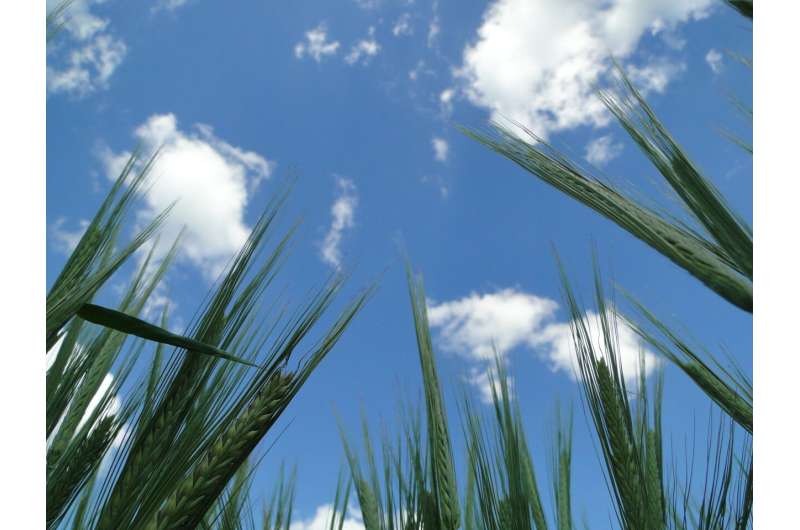Untapping barley’s grain yield potential by mitigating floral degeneration

Barley possesses an indeterminate “spike”-type inflorescence that forms basic floral structures, called spikelets, in a distichous pattern along its central axis (termed rachis). Each rachis node in the barley spike produces three (one central and two lateral) spikelets.
The end of spikelet primordia initiation along the rachis marks the stage of maximum yield potential. Subsequently, the inflorescence meristem dome starts to collapse, followed by gradual basipetal degeneration of spikelet primordia and spikelets until a specific position along the spike is reached.
“We show that up to 50% of the initiated floral primordia are aborted before anthesis, representing an untapped yield potential,” says Prof. Dr. Thorsten Schnurbusch, head of IPK’s research group Plant Architecture. “Understanding the molecular underpinnings of spike PTD may thus help improve grain yield in cereals.”
A study on this topic is published in The Plant Cell.
Due to its quantitative nature and environmental sensitivity, inflorescence PTD constitutes a complex mechanism affecting final grain number. This mechanism appears to be predictable and heritable, consistent with a developmental program.
Photosynthesis, immature spike greening, and energy metabolism appear to be significant contributors to proper spikelet growth and differentiation, and were restricted to basal and central spike parts. The researchers discovered, however, that the degenerating apical spike region undergoes sugar and amino acid depletion along with enhanced abscisic acid biosynthesis and signaling.
“Moreover, we functionally validated one of the apically expressed transcription factor genes, barley GRASSY TILLERS1 (HvGT1), an ortholog of maize GT1, as a growth repressor of apical spikelet development,” emphasizes Nandhakumar Shanmugaraj, first author of the study.
Site-directed Hvgt1 mutants in barley delayed the onset of spike PTD and produced more differentiated apical organs, resulting in significantly more fertile spikelets/florets and increased final spikelet number. “This is the first report on the molecular underpinnings of barley inflorescence PTD; however, here we not only provide a molecular framework for barley but also for related cereals of the Triticeae tribe (e.g., wheat, rye),” added Shanmugaraj.
“We believe that the molecular elucidation of PTD in barley will also stimulate future research directions on the evolution of related genes on growth suppression in other plants beyond crop species,” says Prof. Dr. Thorsten Schnurbusch. As barley is among the most important cereal crops in the world, better exploiting its spike yield potential can thus contribute to world food security and thereby directly help fight against hunger threats imposed by climate change, and natural or war disasters.
More information:
Nandhakumar Shanmugaraj et al, Multilayered regulation of developmentally programmed pre-anthesis tip degeneration of the barley inflorescence, The Plant Cell (2023). DOI: 10.1093/plcell/koad164
Provided by
Leibniz Institute of Plant Genetics and Crop Plant Research
Citation:
Untapping barley’s grain yield potential by mitigating floral degeneration (2023, June 8)
retrieved 8 June 2023
from https://phys.org/news/2023-06-untapping-barley-grain-yield-potential.html
This document is subject to copyright. Apart from any fair dealing for the purpose of private study or research, no
part may be reproduced without the written permission. The content is provided for information purposes only.
For all the latest Science News Click Here
For the latest news and updates, follow us on Google News.

